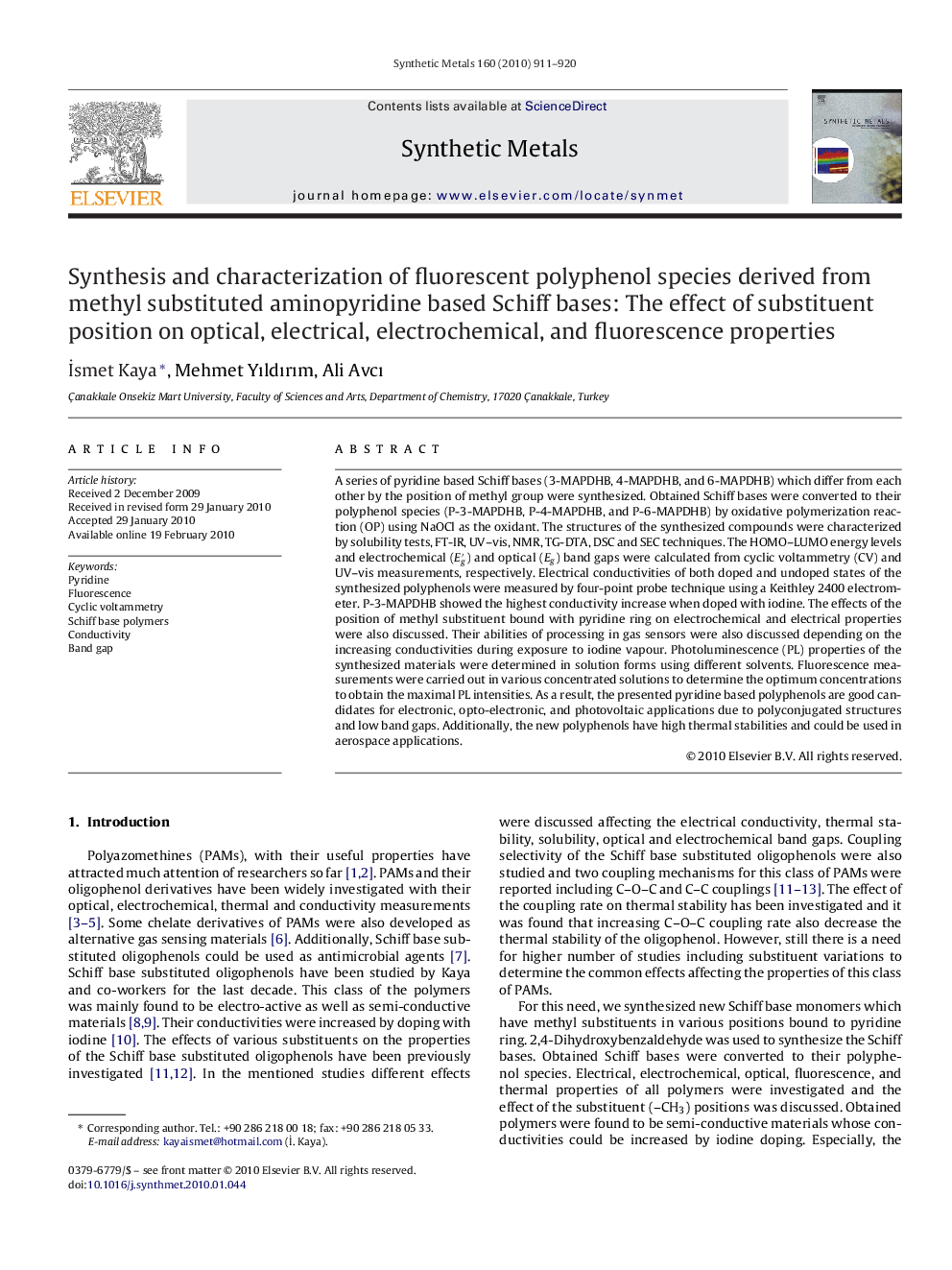| Article ID | Journal | Published Year | Pages | File Type |
|---|---|---|---|---|
| 1442705 | Synthetic Metals | 2010 | 10 Pages |
A series of pyridine based Schiff bases (3-MAPDHB, 4-MAPDHB, and 6-MAPDHB) which differ from each other by the position of methyl group were synthesized. Obtained Schiff bases were converted to their polyphenol species (P-3-MAPDHB, P-4-MAPDHB, and P-6-MAPDHB) by oxidative polymerization reaction (OP) using NaOCl as the oxidant. The structures of the synthesized compounds were characterized by solubility tests, FT-IR, UV–vis, NMR, TG-DTA, DSC and SEC techniques. The HOMO–LUMO energy levels and electrochemical (E′gE′g) and optical (Eg) band gaps were calculated from cyclic voltammetry (CV) and UV–vis measurements, respectively. Electrical conductivities of both doped and undoped states of the synthesized polyphenols were measured by four-point probe technique using a Keithley 2400 electrometer. P-3-MAPDHB showed the highest conductivity increase when doped with iodine. The effects of the position of methyl substituent bound with pyridine ring on electrochemical and electrical properties were also discussed. Their abilities of processing in gas sensors were also discussed depending on the increasing conductivities during exposure to iodine vapour. Photoluminescence (PL) properties of the synthesized materials were determined in solution forms using different solvents. Fluorescence measurements were carried out in various concentrated solutions to determine the optimum concentrations to obtain the maximal PL intensities. As a result, the presented pyridine based polyphenols are good candidates for electronic, opto-electronic, and photovoltaic applications due to polyconjugated structures and low band gaps. Additionally, the new polyphenols have high thermal stabilities and could be used in aerospace applications.
